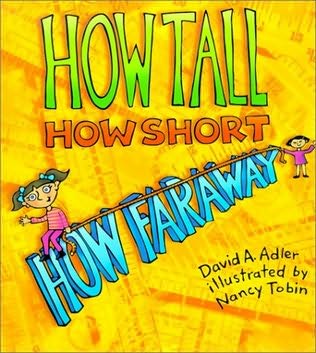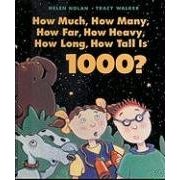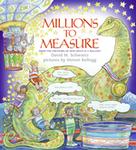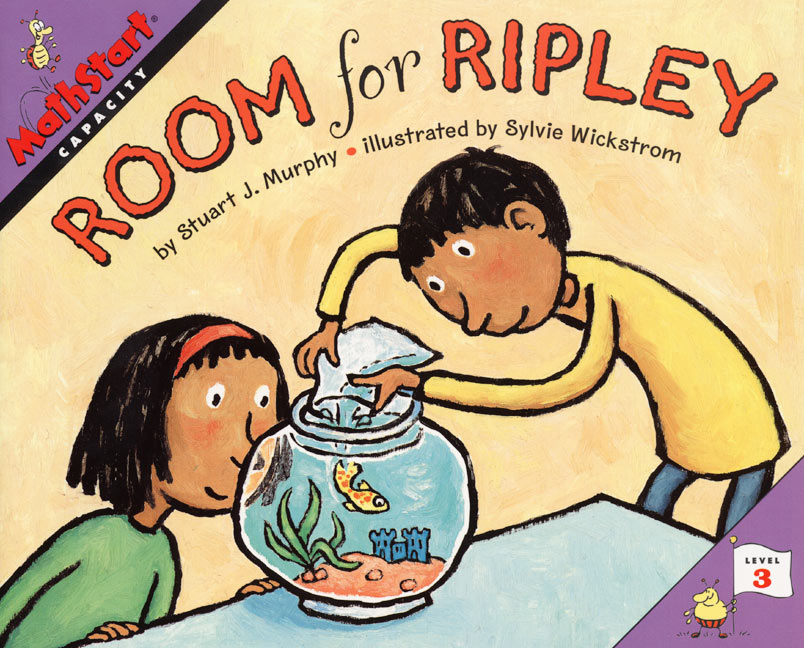Introduction:
We know that measurement is a fundamental mathematical component. As a teacher, it is our job to teach it well. Below you will find a selection of books that are necessary for children to develop a clear understanding
of measurement. You will also find a selection of websites and resources useful for developing proficiency with basic measurement facts and concepts. These materials provided are anticipated for fourth graders; however they can be modified for different grade levels if necessary.
 How Tall, How Short, How FarAway? by David A. Adler and illustrated by Nancy Tobin is a book that introduces several measuring systems such as the Egyptian system, the customary (inch-pound system), and the metric system. The book has some questions asking what units would you use to measure an object such as the length of a celery stick and other questions ask you to find the measurement such as the length of your block.
How Tall, How Short, How FarAway? by David A. Adler and illustrated by Nancy Tobin is a book that introduces several measuring systems such as the Egyptian system, the customary (inch-pound system), and the metric system. The book has some questions asking what units would you use to measure an object such as the length of a celery stick and other questions ask you to find the measurement such as the length of your block.
 How Much, How Many, How Far, How Heavy, How Long, How Tall is 1000? by Helen Nolan and illustrated by Tracy Walker is a book finding different ways to measure 1000. How tall would a pile of 1000 acorns be? And if those acorns grew into 1,000 oak trees, how big would that forest be? As children learn about large numbers, counting becomes less practical and understanding these numbers becomes more and more important. In this playful and mathematically sound book, children will develop an understanding of how big, how small, how long and how tall 1,000 really is!
How Much, How Many, How Far, How Heavy, How Long, How Tall is 1000? by Helen Nolan and illustrated by Tracy Walker is a book finding different ways to measure 1000. How tall would a pile of 1000 acorns be? And if those acorns grew into 1,000 oak trees, how big would that forest be? As children learn about large numbers, counting becomes less practical and understanding these numbers becomes more and more important. In this playful and mathematically sound book, children will develop an understanding of how big, how small, how long and how tall 1,000 really is!
 Millions to Measure by David M. Schwartz and illustrated by Steven Kellogg is a book exploring the invention of length, weight, and volume measurements. How tall is Moonbeam, the unicorn? How long are the whiskers of Jello, the cat? And just how heavy is that darling hog? Tons and teaspoons and ounces and feet and yards and miles … what a headache! With millions of things to measure, wouldn’t one standard system be simpler? With another wave of the wand, Marvelosissimo, the Magician, explains to you to the development of standard units of measure, and shows the simplicity of calculating length, height, weight, and volume using the metric system and introduces the world of metrics and makes it easy to understand the basic pattern of meters, liters, and grams. And with Steven Kellogg’s playful and delightfully detailed illustrations, measuring has never been such a blast!
Millions to Measure by David M. Schwartz and illustrated by Steven Kellogg is a book exploring the invention of length, weight, and volume measurements. How tall is Moonbeam, the unicorn? How long are the whiskers of Jello, the cat? And just how heavy is that darling hog? Tons and teaspoons and ounces and feet and yards and miles … what a headache! With millions of things to measure, wouldn’t one standard system be simpler? With another wave of the wand, Marvelosissimo, the Magician, explains to you to the development of standard units of measure, and shows the simplicity of calculating length, height, weight, and volume using the metric system and introduces the world of metrics and makes it easy to understand the basic pattern of meters, liters, and grams. And with Steven Kellogg’s playful and delightfully detailed illustrations, measuring has never been such a blast!
 Measuring Penny written and illustrated by Loreen Leedy is a book about a girl named Lisa who has an important homework assignment–to measure something in several different ways. She has to use standard units like inches and nonstandard units like paper clips to find out height, width, length, weight, volume, temperature, and time. Lisa decides to measure her dog, Penny, and finds out … Penny’s nose = 1 inch long, Penny’s tail = 1 dog biscuit long, Penny’s paw print = 3 centimeters wide … and that’s only the beginning! Lisa learns a lot about her dog and about measuring, and even has fun doing it.This clear and engaging concept book, delivered with a sense of humor, is certain to win over the most reluctant mathematician.
Measuring Penny written and illustrated by Loreen Leedy is a book about a girl named Lisa who has an important homework assignment–to measure something in several different ways. She has to use standard units like inches and nonstandard units like paper clips to find out height, width, length, weight, volume, temperature, and time. Lisa decides to measure her dog, Penny, and finds out … Penny’s nose = 1 inch long, Penny’s tail = 1 dog biscuit long, Penny’s paw print = 3 centimeters wide … and that’s only the beginning! Lisa learns a lot about her dog and about measuring, and even has fun doing it.This clear and engaging concept book, delivered with a sense of humor, is certain to win over the most reluctant mathematician.
 Room for Ripley by Stuart J. Murphy and illustrated by Sylvie Wickstrom is a book introduce various units of liquid measure. A boy named Carlos is getting a fish bowl ready for his new pet. Carlos pours cups, pints and quarts of water into his fish bowl, getting ready for his new puppy, Ripley. Readers can learn about capacity as they see just how much water it takes to make room for Ripley!
Room for Ripley by Stuart J. Murphy and illustrated by Sylvie Wickstrom is a book introduce various units of liquid measure. A boy named Carlos is getting a fish bowl ready for his new pet. Carlos pours cups, pints and quarts of water into his fish bowl, getting ready for his new puppy, Ripley. Readers can learn about capacity as they see just how much water it takes to make room for Ripley!
Recommended Websites:
Math Matching – This is an activity of matching equivalent customary measures. For example, 16 ounces is equivalent to 1 pound. The matches will make a picture.
Can You Fill It – This is an activity involving filling up containers using three different sized pots. The goal is to use to pick a combination of pots that fill the container with the fewest amount of pours without going over.
Harbour Measurements – This is an activity where you will need to help Molly load up the boat by choosing the correct parcel I ask for. This is testing estimating metric measures.
Bitesize Maths:Practice Postage Measurements – This is an activity where you have to find the length and weight of a parcel and then figure out from those measurements how much a postage stamp will cost using the chart.
Measuring Wangdoodles – This is an activity where you are to find the weight of each Wangdoodle using the information provided by the scales. To be successful, you will have to make sure that the weight you assign to each Wangdoodle works on each scale. This also introduces algebraic equations.
Additional Resources:
Cooking Measurement Equivalents
This side provides measuring equivalents for teaspoons, tablespoons, cups, pints, fluid ounces, and more. This page also includes the conversions for metric and U.S. systems of measurement.
This site provides a dictionary will all mathematical definitions and an example. You just have to click on the letter that the work starts with and then click on he word. For example for the word volume, you would click on the letter v and then click on the word volume. You will then see the definition and an example.
This site is used to help understand vertical and horizontal measurement of large objects.
